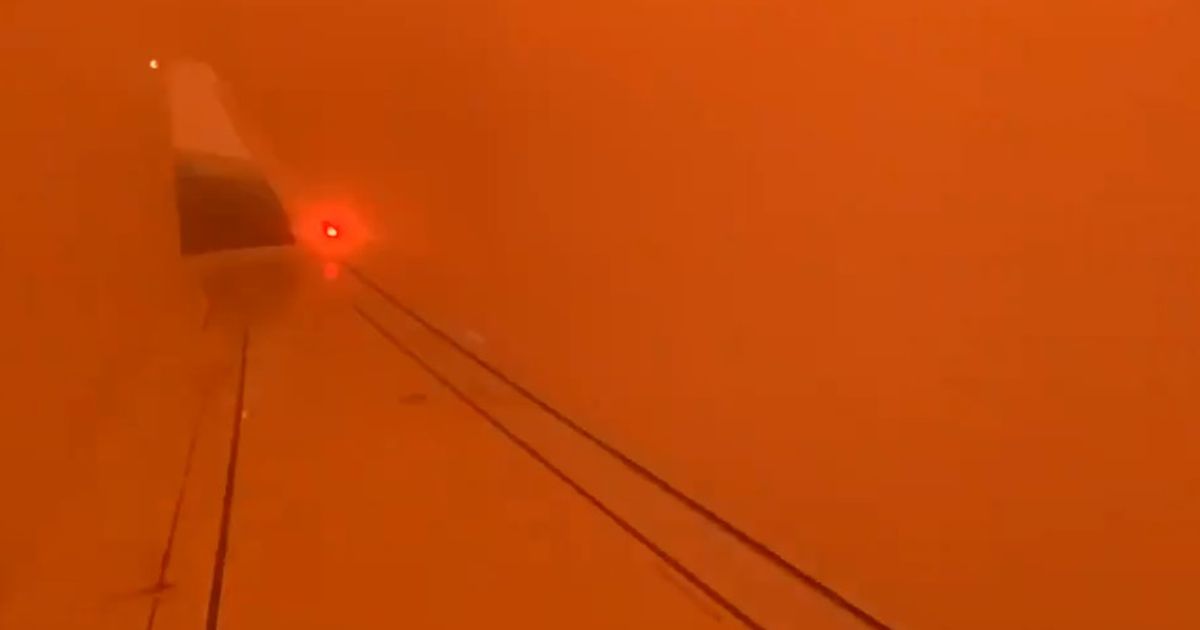
The dystopia is colored orange.
The profoundly dense smoke layer over the San Francisco region on Sept. 9, born from California’s record-breaking fire season, resulted in a dramatically orange glow over the city. San Francisco International Airport (SFO) tweeted a video of an Alaska Airlines plane taking off through the strange orange haze, en route to idyllic Palm Springs, Calif.
The orange color is created by smoke particles manipulating the sunlight traveling through the smoke, explained the Bay Area Air District, a pollution control agency. When thick enough, smoke particles scatter blue light (a shorter light wavelength) but “yellow-orange-red light” (which travels in longer wavelengths) slips through the smoke, “causing skies to look orange,” the agency said.
In the sped-up video, the plane eventually ascends above enough smoke to experience more normal daylight.
Extremely dense & tall smoke plumes from numerous large wildfires, some of which have been generating nocturnal pyrocumulunimbus clouds (“fire thunderstorms”), are almost completely blocking out the sun across some portions of Northern California this morning. #CAwx #CAfire pic.twitter.com/y9evl4u0eq
— Daniel Swain (@Weather_West) September 9, 2020
Over 2.5 million acres have burned in California this year, the most land burned in the Golden State on record. It will almost certainly get worse. The fall brings potent winds (Santa Ana and Diablo winds) to the region, which in years’ past have fanned some of the state’s most devastating fires.
“It’s another ingredient to throw into the apocalypse of 2020,” Jeff Weber, a research meteorologist at the University Corporation for Atmospheric Research, told Mashable on Wednesday. “Santa Anas are extremely hazardous for fire weather.”
2020, however extreme, continues a trend of significantly more fire in California over the last few decades. Between 1972 and 2018, the amount of land burned in California grew fivefold. Climate change, abetted by vastly overgrown forests, is the reason why. California, like almost every region on Earth, has been warming since the late 1800s. Warmer air in a dry climate parches plants, trees, and grasses (called “fuels”), making them notably more susceptible to fire.
“When we talk about how climate enables fire activity, we’re often talking about how dry fuels are,” John Abatzoglou, a fire scientist at the University of California, Merced, told Mashable in late August as some of the largest fires in state history burned. “This year is embedded within a long-term uphill climb toward warmer, drier, and smokier climates.”
Though wildfires aren’t inherently bad — they’re necessary to thin overcrowded, inferno-prone forests and promote healthy ecosystems — modern blazes are burning in a more severe fire regime.
Three of the four largest blazes in state history are now burning, releasing bounties of smoke into the atmosphere.
